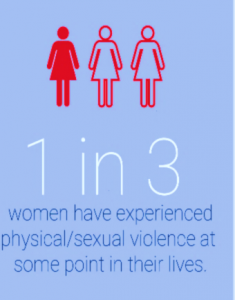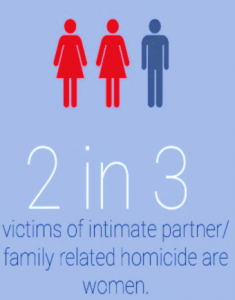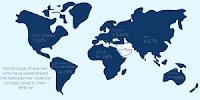The Faces of Violence against Women – An Article by ONAR Istanbul
by Serena Granzini and Stefania Arru, Onar Istanbul

Worldwide 35% of women have experienced physical and/or sexual violence in their lives.
Violence against women and girls is a global issue and nowhere in the world can claim to have resolved the problem.
Worldwide 35% of women have experienced physical and/or sexual violence in their lives. Violence against women, often termed Gender Based Violence is as a manifestation of gender inequality and a violation of fundamental human rights. It’s an issue that affects all women throughout their lives, from childhood to adulthood and shows numerous faces: sexual, physical psychological and economic.
Worldwide 35% of women have experienced physical and/or sexual violence in their lives. Violence against women, often termed Gender Based Violence is as a manifestation of gender inequality and a violation of fundamental human rights. It’s an issue that affects all women throughout their lives, from childhood to adulthood and shows numerous faces: sexual, physical psychological and economic.
Worldwide 35% of women have experienced physical and/or sexual violence in their lives.
Two thirds of victims killed by intimate partner or in the family context are women.
 |
|
| Two thirds of victims killed by intimate partner or in the family context are women |
. |
Two thirds of victims killed by intimate partner or in the family context are women.Gathering statistics on gender-based violence is very difficult given that the crime often occurs within the family home and is therefore not reported. According to the available data on violence against women, the highest percentages of psychological and sexual violence committed by the intimate partner are reported in Africa, Asia and Oceania.
But what is violence against women?
 |
| The highest percentages of psychological and sexual violence is committed by the intimate partner are reported in Africa, Asia and Oceania. |
Physical violence is only one of the manifestations of violence, another common violence against women is economic abuse, this type of abuse denies and controls a women’s access to resources, including time, money, transportation, education, employment food or clothing. It occurs across all socio-economic levels and is recognised as type of domestic violence.
In Italy 34% of women are subject to economic violence. A common manifestation of this is when women are denied permission to work or access family money.
In Turkey three out of ten women cannot go to the high street without their husband’s permission.
The Council of Europe in the Istanbul Convention gives a wide definition to the word “violence” and recognises the range of abusive relationships. Article three of the Istanbul Convention describes these different kinds of violence:
Violence against women means “all acts of gender based violence that result in, or are likely to result in, physical, sexual, psychological or economic harm or suffering to women, including threats of such acts, coercion or arbitrary deprivation of liberty, whether occurring in public or in private life”.
Only consciousness of personal value and awareness through education can stop this wave of violence.
For this reason let’s analyse the categories in which violence is defined. The Convention defines the following forms of violence against women:
- Psychological violence (Article 33)
- Stalking (Article 34)
- Physical violence (Article 35)
- Sexual violence, including rape (Article 36)
- Forced marriage (Article 37)
- Female genital mutilation (Article 38)
- Forced abortion and forced sterilisation (Article 39)
- Sexual harassment (Article 40) It is important remind ourselves of the different and terrible ways in which violence occurs in order to be conscious of the scale of the problem and to be prepared.
Gender based violence is committed by men against women for a number of complex reasons. Violence against women is a responsibility of society as a whole, including at its centre the male gender who commit the majority of violence against women.
Ok, then what can I do?
Prevention is always better than a cure; by raising awareness of the many types of violence that women endure we can facilitate a societal shift that ends this violence.
- Know your rights and the important steps to take in case of need for you or for a friend.
- Share your story, if you raise your woice you will help yourself and many other women like you.
- Help and support each other without judgement.
- Bear in mind that violence is wrong and unacceptable. ALWAYS.
- We need to push politicians and civil society actors to make sure those international instruments are used to protect women and prosecute offenders.
Only together can we end violence against women in all its forms.
Statistics and images from: http://unstats.un.org/unsd/gender/worldswomen.html


